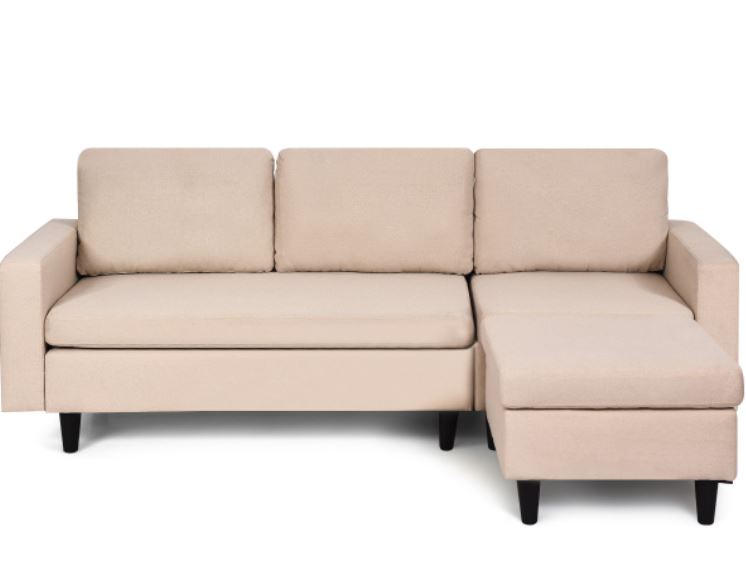Your sofa is more than just a piece of furniture — it’s the heart of your living room, a place of comfort, style, and daily use. Whether you’re selecting fabric for a brand-new sofa or planning to reupholster a beloved one, choosing the right sofa upholstery fabric can make all the difference. The wrong choice, however, can lead to premature wear, fading, or regret over a design that doesn’t suit your lifestyle.
To help you make a well-informed decision, we’ll uncover the top mistakes people make when choosing sofa upholstery fabric — and how to avoid them to ensure your sofa remains beautiful, comfortable, and long-lasting.
Ignoring Fabric Durability and Usage Needs
One of the most common mistakes is prioritizing aesthetics over functionality. While it’s easy to fall in love with a fabric’s color or texture, durability should be your top consideration — especially if your sofa is used frequently.
Every fabric has a durability rating known as the rub count (measured by the Martindale or Wyzenbeek test). The higher the number, the more wear and tear the material can withstand. For example, delicate silk or velvet may look luxurious but might not hold up well in a family room where children and pets are active.
Avoid this mistake:
For high-traffic areas, choose durable materials like polyester blends, microfiber, leather, or tightly woven cotton.
For occasional-use spaces, you can opt for more delicate or decorative fabrics.
Matching the fabric strength to the sofa’s purpose ensures it stays stylish and functional for years.
Overlooking Lifestyle and Maintenance Requirements
Your lifestyle plays a major role in determining the right upholstery fabric. A busy household with kids, pets, or frequent guests requires fabrics that are stain-resistant, easy to clean, and durable. Choosing a fabric purely for its appearance without considering maintenance can lead to frustration.
For instance, light-colored cottons may stain easily, while textured fabrics can trap pet hair and dust. Similarly, luxurious options like silk or linen may require professional cleaning — not ideal for a home where spills are common.
Avoid this mistake:
If you have pets or children, choose performance fabrics treated for stain and moisture resistance.
Opt for removable or washable covers if possible.
For low-maintenance living, synthetic blends or treated natural fabrics offer both beauty and practicality.
Remember, the best upholstery fabric is one that complements your daily routine as much as your décor.
Ignoring Color and Lighting Factors
A fabric’s color can look entirely different under showroom lighting compared to your home’s natural or artificial light. Many homeowners select upholstery in-store only to discover that the color appears too dark, too light, or clashes with existing décor once placed in their living space.
Moreover, sunlight exposure can cause certain fabrics — especially bold or dark colors — to fade over time. This is particularly important in Dubai or other sunny climates where natural light is abundant.
Avoid this mistake:
Always take fabric samples home before deciding. Observe how they look in daylight and under indoor lighting at different times of day.
If your sofa will be near a window, choose fade-resistant fabrics like acrylic or polyester blends.
Neutral and mid-tone colors tend to be more forgiving and timeless for large furniture pieces.
Choosing Style Over Comfort
While design and pattern play a huge role in visual appeal, comfort should never be compromised. Some fabrics may look stunning but feel rough, itchy, or sticky to the touch — not ideal for lounging or long hours of sitting.
For example, stiff jacquard or metallic-thread fabrics may exude luxury but lack comfort. On the other hand, soft textures like cotton, velvet, or chenille offer a cozy and inviting feel.
Avoid this mistake:
Always test the fabric’s texture before committing. Touch and feel it — imagine sitting on it daily.
Balance style with comfort: opt for fabrics that look great but also feel pleasant against the skin.
A sofa that looks elegant but isn’t comfortable defeats its very purpose.
Forgetting About Fabric Patterns and Scale
Patterns can add character and vibrancy to your sofa — but scale matters. Large prints may overwhelm smaller spaces or clash with other patterns in the room, while tiny prints can appear too busy or lose their impact on a big sofa.
Avoid this mistake:
Consider the size of your sofa and the overall room proportions when choosing patterned fabrics.
Mix patterns carefully: if your curtains or rugs already feature strong designs, opt for solid or subtly textured upholstery.
Use patterned fabric on accent chairs or cushions if you want to introduce variety without overpowering the space.
Proportion and balance are key to achieving a cohesive interior look.
Neglecting Fabric Backing and Weave Quality
A sofa’s longevity depends not only on surface appearance but also on the quality of its weave and backing. Poorly woven fabrics can stretch, pill, or tear prematurely. Similarly, fabrics without proper backing may lose shape or wrinkle over time.
Avoid this mistake:
Choose tightly woven materials with a stable structure.
Check the fabric backing — it should add strength without compromising flexibility.
Ask your upholsterer about treatments that prevent fraying or pilling.
Investing in a well-constructed fabric ensures your upholstery remains beautiful and functional even after years of use.
Disregarding Climate and Environment
In warm, humid climates like Dubai, certain fabrics may trap heat or absorb moisture, leading to discomfort and quicker wear. Natural fabrics such as cotton and linen are breathable but can fade faster under direct sunlight, while leather and synthetic blends handle temperature changes better.
Avoid this mistake:
Choose breathable yet durable fabrics suited for your region’s climate.
For air-conditioned spaces, most fabrics work well, but for rooms with high humidity, opt for moisture-resistant materials.
If your sofa is near large windows, use UV-resistant fabric or layer it with sheer curtains to reduce direct exposure.
Skipping Professional Advice
With so many fabrics available, choosing the perfect upholstery can feel overwhelming. Many people rely solely on online images or guesswork — a costly mistake. Professional upholsterers or interior designers can provide valuable insight on durability, fabric blends, and color matching.
Avoid this mistake:
Consult a professional upholsterer to understand which materials suit your furniture style and daily use.
Request fabric swatches and durability details before finalizing your choice.
Their expertise ensures you make a decision that’s both practical and aesthetically pleasing.
Final Thoughts
Selecting the right sofa upholstery Abu Dhabi fabric is both an art and a science. Beyond color and design, it’s about understanding durability, maintenance, comfort, and how your lifestyle influences daily wear. Avoiding these common mistakes can save you time, money, and frustration — and ensure your sofa remains a stylish, comfortable centerpiece for years to come.
Before you rush into buying that trendy fabric, take a moment to evaluate your needs, test textures, and seek expert advice. With the right approach, your sofa can be a perfect blend of durability, beauty, and everyday comfort — a true reflection of thoughtful living.





